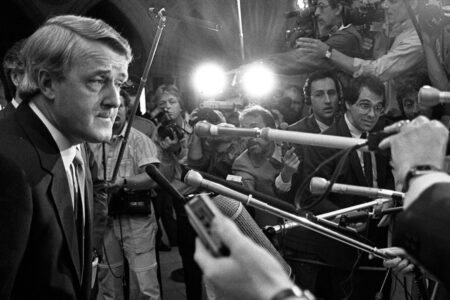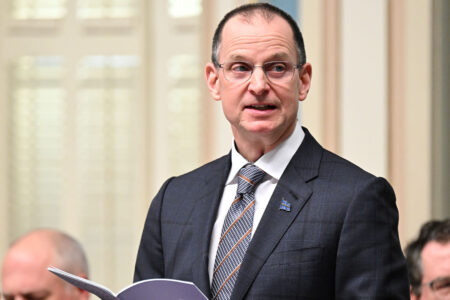
If you are the type of person who wishes you’d taken more statistics courses in university, this book is either the one for you or the cure for that yearning. But if you are the type of person who really enjoyed reading Nate Silver’s “FiveThirtyEight” blog in the New York Times because you appreciated its data-driven insights into the last US election, this is almost certainly going to disappoint you. The blog was one of the political phenoms of the electoral season, but The Signal and the Noise is not about politics. It does, however, explain what made his blog so essential. Silver came to prominence among political junkies during the 2012 presidential campaign. He constructed a predictive model for the presidential election, which integrated and weighted the available opinion polls as well as other variables (the workings of the model are not revealed in the book). The model yielded forecasts that continually predicted the strong odds of an Obama victory, so that seemed to its fans — mostly Democrats — to be the most robust and reliable predictor of all in a sea of conflicting election coverage.
By the end of the campaign, 20 percent of visitors to the New York Times Web site were headed for Silver’s blog. Not all of them were fans of the blog. Republicans, who had apparently invented their own political reality and electorate, attacked him viciously on everything from alleged partisanship to possible sexual orientation. They went to great lengths to demonstrate that it was possible Silver’s predictions were wrong (a fact he readily acknowledged by focusing on probability rather than certainty), and in the process apparently devoted no share of mind to the idea that he might possibly be right. The Republicans’ arguments only served to elevate Silver to superstar status.
In The Signal and the Noise (terms familiar to makers of cassette mix-tapes the first to admit that it is much easier to call the outcome of an election as voting day nears or to use statistics to determine which shortstop will get on base more frequently than it is to predict the impact of climate change or how much an economic stimulus will lower unemployment.
Another principle is not just to use data, but to trust them. Silver is scathing in his discussion of political punditry, citing his study that shows members of the McLaughlin Group are just as likely to be wrong as right on any given political prediction. The foundation of Silver’s election predictions was polls that were, within their limitations, accurately capturing voting intention.
Also, he says, we have to distinguish the signal from the noise. In the past, forecasting was hampered by limits to the amount of data available. Now we are inundated with data, which gives rise to the new challenge of isolating the data that matter (the signal) from the data that distract (the noise). Silver notes that the US government tracks 45,000 economic data points each year, most of which will be irrelevant to forecasting. But which ones should we pay attention to? One of the reasons Silver’s predictions were successful was that while Republican partisans seized on the occasional poll that gave them cause for optimism, Silver avoided cherry-picking numbers to fit a particular world view. He recognized where the consensus of polling lay and which polls were outliers from that consensus.
Silver also argues for the importance of probability. Those who follow “FiveThirtyEight” will recognize this Silver principle. At no point did Silver claim to know that Obama would win Florida or Ohio. On election day, he said the data showed Obama with a 91 percent chance of winning Ohio. Silver may have been comfortable calling an Obama win, but he knew that polls have margins of error, that even the best executed polls are wrong 5 percent of the time and that nobody really knew which Americans were going to turn out to vote. People who say something is “likely” rather than “certain” are often disparaged for hedging their bets or not having the courage of their convictions. Silver persuasively argues that accurate forecasts are couched in probability, not clothed in certainty. Confidence does not equal accuracy.
Silver’s final principle is that true objectivity is not possible. We’re too fallibly human for that. But he does argue that we need to be intellectually flexible enough to adjust our preconceptions when presented with new data or evidence and change our forecasts accordingly.
Silver could have been referring to Mitt Romney’s pollsters and strategists when he wrote in The Signal and the Noise, “Acknowledging the real world uncertainty in their forecasts would require them to acknowledge the imperfections in their theories about how the world was supposed to behave — the last thing an ideologue wants to do.” But his principles of data analysis can also be applied to those who take ideological stands on public policy issues, whether climate change or crime, or even to those who enjoy sitting around a poker table.
It is striking that after an election in which Silver became a guru to millions of people looking for certainty about what was going to happen, much of his book is a warning about the limits of our ability to predict or forecast. Follow my principles, Silver says, and we can make better predictions than we could if we relied on our biases. And always keep in mind that, despite all the data that are being emitted, there are too many unknowns (think earthquakes, or why that snowstorm never showed up) for forecasts not to fail with frustrating regularity. In this aspect, Silver approvingly cites Donald Rumsfeld’s doctrine of “unknown unknowns.”
The Signal and the Noise will likely disappoint those who come looking for more of Silver’s New York Times blog. It would have been more readable and effective as a long-form article (as in Malcolm Gladwell’s The Tipping Point, among others, the reader gets the point long before the book is over). But in providing readers with a framework for guesstimating the probability of future events, Silver does a valuable service. This may be of limited utility to most people, in most cases. But casual poker players might want to read it to be able to keep more cash in their jeans.
Photo: Shutterstock








